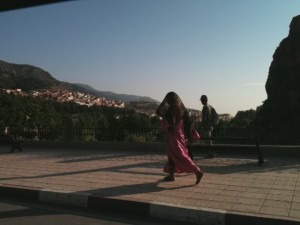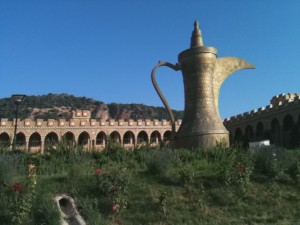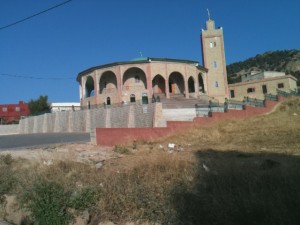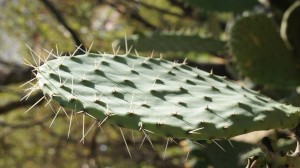In the midst of house-hunting, our friend Said took us on a drive to the nearby city of Azrou for some shopping. The drive itself was an amazing tour of the local cedar forests and the Middle Atlas mountains. Descending into Azrou, you really see the mountains; up high in Ifrane, they’re less noticeable somehow. Not that I managed to take any photos on that winding road…

In Azrou, Said tried to orient us to the shopping resources of the town: where to get fuel, where to get prickly pears (good for the digestion during Ramadan), where to find the best bakery. Then he took us on a high-speed tour of the permanent market (as opposed to the famous Tuesday suq or souk).

Lots of delicious smells of parsley, cilantro, mint. Also chickens and ducks sitting on blankets surrounded by eggs. “Are they there to lay eggs?” asks Jeremy. “No: I think they’re there to be bought and eaten.” “Why don’t they fly away?” “Probably their legs are tied.” Then there are the butchers’ shops with the lamb’s heads still attached to their skinned bodies. We passed some men with long lines stretched down the narrow alley. One of the men held a motor in his hand. It made me think of flying a kite. “What are they doing?” I asked. “They are helping make a djellaba,” replied Said. The motor twists the strings together to make a braid for trimming the edges of a traditional overall covering or djellaba.
On the way home, we noticed a vacation center and mosque built by developers from the United Arab Emirates. Morocco is evidently becoming a vacation destination for other parts of the Muslim world….


So here’s another postcolonial ecology note: Opuntia (prickly pear, native to the western hemisphere, probably Mexico) was introduced into North Africa by the French as a means of feeding cochineal, insects whose shells and eggs produce a red color used to dye food and clothing. Opuntia quickly naturalized and in other places became invasive. In Morocco, it seems to exist in balance with other plants, providing fruits especially appreciated during Ramadan. Who would have anticipated this?
